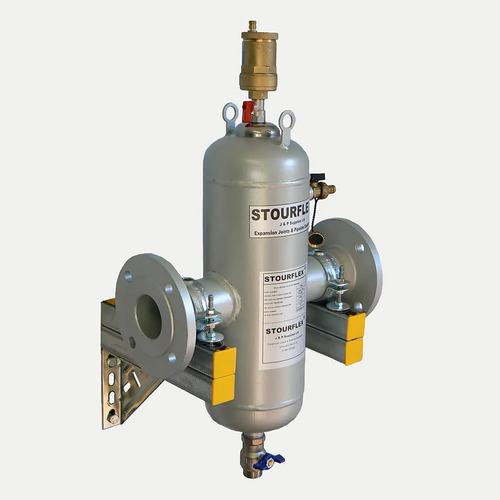In the world of modern building services, the efficiency and longevity of heating and chilled water systems are paramount. Yet, these closed-loop systems face a constant threat that can quietly compromise their performance: the presence of air and dirt. These seemingly innocuous contaminants can lead to a host of serious problems, from reduced efficiency and increased running costs to premature equipment failure. This is why a key component, the air and dirt separator, has become an indispensable part of a well-engineered system.
The Silent Saboteurs: Air and Dirt
Air and dirt enter a system in various ways, often during initial filling and commissioning, or through ongoing processes. Air exists in the water in two forms: free air, which appears as visible bubbles, and dissolved air, which is released from the water as a result of Henry’s Law—the solubility of a gas decreases as the temperature of the liquid increases and pressure decreases. As water is heated or passes through low-pressure points, this dissolved air is released as microscopic bubbles, or ‘microbubbles’, which are notoriously difficult to remove with standard air vents.
Dirt, on the other hand, consists of a mixture of rust, scale, and other sludge that builds up over time from corrosion within the system. These particles can cause blockages, wear on pump seals, and reduce the overall efficiency of heat transfer surfaces inside boilers and heat exchangers.
How an Air and Dirt Separator Works
A combined air and dirt separator is a clever piece of engineering that tackles both of these issues in a single, compact unit. The process typically begins as the system water enters an enlarged chamber within the separator. This increase in volume causes a significant reduction in the flow velocity and turbulence of the water.
Within this chamber, a specially designed internal element, often a stainless-steel diffuser screen or mesh, is at the heart of the separation process. As the water flows over this element, the microbubbles of air, which are not buoyant enough to rise on their own, are coalesced—or brought together—on the surface of the mesh. As they combine, they form larger, more buoyant bubbles that then rise to the top of the chamber. From there, they are automatically expelled from the system via an automatic air vent.
Simultaneously, the slower flow rate in the enlarged chamber allows the heavier solid particles and sludge to settle out of the water. These contaminants sink to the bottom of the chamber, where they collect in a dirt collection reservoir. A drain valve at the base of the unit allows for easy manual removal of these particles during routine maintenance, often without needing to shut down or drain the entire system.
The Benefits of a Clean System
The installation of a high-quality air and dirt separator brings numerous advantages that directly translate to operational efficiency and cost savings.
- Improved System Efficiency: Air is a poor conductor of heat. When air bubbles cling to the internal surfaces of pipes, radiators, and boilers, they create an insulating layer that reduces heat transfer. By removing this air, the system can operate more efficiently, requiring less energy to achieve the desired temperature.
- Corrosion Prevention: Oxygen in the water is a primary driver of corrosion. By continuously removing dissolved oxygen, air and dirt separators protect ferrous components like steel pipework and cast-iron boilers from rust and degradation, significantly extending their service life.
- Reduced Noise: Air pockets in the system are a common cause of gurgling, banging, and other irritating noises as they pass through pumps, valves, and heat emitters. The continuous removal of air ensures a quieter and more comfortable operating environment.
- Protection of Components: The sludge and debris removed by the separator prevent abrasions and blockages that can damage sensitive components such as pumps, control valves, and heat exchangers. This reduces the need for costly repairs and replacements.
For these reasons, particularly in large-scale commercial and industrial applications, the air and dirt separator is no longer considered an optional extra but a fundamental part of good system design. Its ability to maintain water quality by eliminating two of the most damaging contaminants ensures that hydronic systems operate at their peak performance for years to come.
